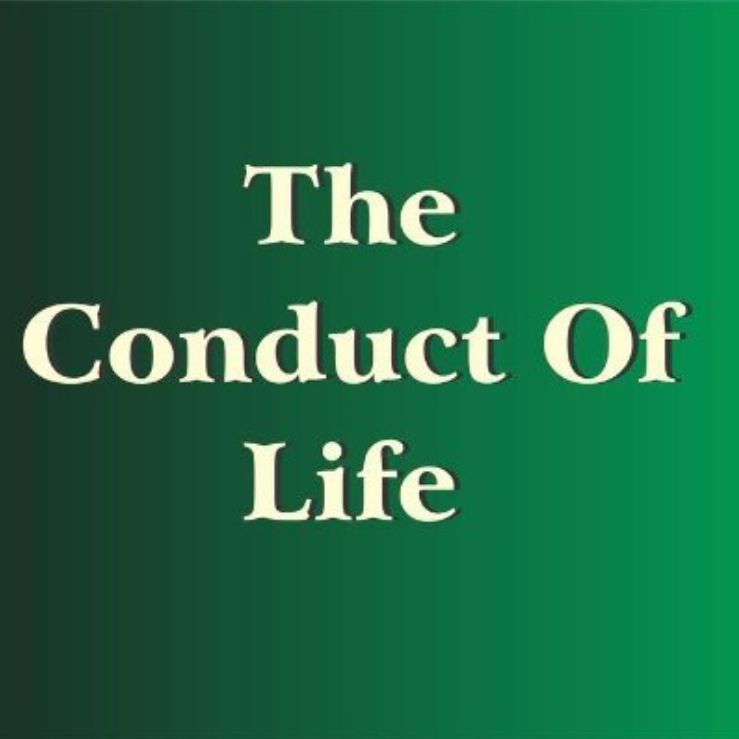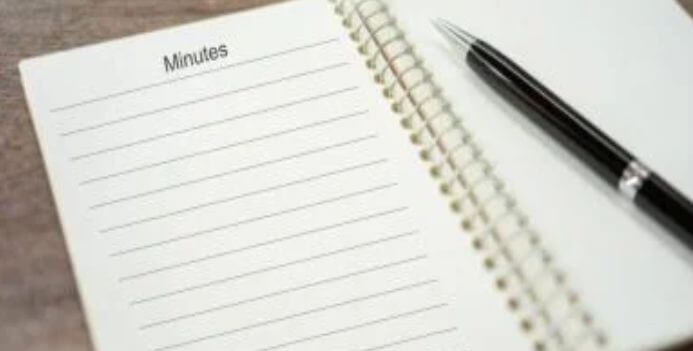Last updated on February 25th, 2025 at 04:14 pm
Taking meeting notes is a task that seems simple and ordinary from a distance, but up close, you will see they require special skill and special understanding.
Writing meeting notes is rather a delicate responsibility as focus and attentiveness is required to be able to put down every useful information.
Minutes are the summary of the main ideas discussed in a meeting and the future actions to be taken on the matters.
Succinct meeting notes that capture the purpose of the meeting and its future recommendations can save time and resources. Recording minutes is essential because the details can be referred back to in the future for follow-up purposes.
When minutes are not taken, it is observed that members of the association or organization would have different versions of recollections of the meeting’s outcome. They will also have conflicting ideas about what was agreed upon and the important points would be forgotten or not achieved by the supposed date.
The secretary is responsible for taking minutes in a meeting; however, the duty can be alternatively handed to someone else and he has to be responsible to write the minute and produce a final document to be sent to the attendees.
Also Read: Emotional Competence
This post will look into and explain how you can write minutes effectively. Having these tips handy will always aid you to produce useful notes that would successfully be turned into a final minutes document.
Things to record during a meeting:
- Attendees’ names
- How the meeting started
- Description of discussion in the meeting
- Actions proposed in the future
Writing meeting notes
Your responsibility as a minute writer is not just to write down what is discussed but also to know in advance the agenda of the meeting and have a basic understanding of it.
Basic knowledge will help you to write effective notes as you follow the discussion with ease.
Preparation is key as you will not bump into embarrassing moments and begin to whisper to someone for clarification, though it’s not in bad taste to ask for repetition when you didn’t hear clearly a useful point that was said.
Tips for writing good meeting notes
Prepare ahead of the meeting
Before the meeting commences, take some time to familiarize yourself with the agenda and any other related documents.
This will help you understand the purpose of the meeting and the order in which the topics will come.
It is also in good taste to prepare a template for your notes that include key sections such as attendees, agenda items, action items, and next steps.
Meet and discuss the meeting with the chairman in advance
The chairman is in charge of managing the meeting and should be your first point of call for any information and clarifications. This should be done before the meeting and you can initiate that as you are the one who knows what information would make you confident.
Identify points worth putting down
You might be tempted to make notes of everything said at the meeting verbatim. It is in good taste to compose yourself, focus on what the discussant says, and think about how much of the speech is worth recording.
With good preparation, you shouldn’t be struggling to identify or confused about what to put down.
Sitting close to the chairman
Sitting around the chairman gives you ample room to hear clearly what is said as much of the speech is going to come from the platform. You are a part of the management team.
Taking meeting notes during a meeting is an essential skill for any professional. Good notes can help you remember key points, follow up on action items, and communicate effectively with colleagues and stakeholders.
In this blog post, we will discuss some tips for writing effective meeting notes.
Know when to listen
It is in excessively bad taste for a minute taker to absolutely concentrate on writing. There should be moments you should pause and listen, and this is after you must have determined the part of the meeting you will write down.
You are a part of the meeting and should also participate either by listening or making contributions and not just writing.
Focus on the key points
During the meeting, focus on the key points that are discussed. Try to capture the main ideas and any decisions or action items that are agreed upon.
Avoid writing down every single detail or conversation, as this can make it difficult to read and understand your notes later on.
Write neutrally
Your minute should not contain your personal opinion or be influenced by your thoughts no matter how emotional the meeting could be.
You should exactly put down what the meeting provides to avoid arguments and conflicting opinions later.
A biased view by you and let it reflect on the minute would put you in a bad spot and create problems for the meeting.
Use clear and concise language
When writing your notes, use clear and concise language that is easy to understand. It is not advisable to use jargon or technical terms that may be strange to some people.
Use bullet points, numbering, or headings to break up your notes and make them easier to read.
Be accurate and objective
It is important to be accurate and objective when taking meeting notes. Write down what was said, not what you think was said or what you would like to hear.
If you are unsure about something, ask for clarification during the meeting or leave a blank space in your notes to fill in later.
Include action items and next steps
One of the most important parts of meeting notes is capturing action items and the next steps.
Make sure to include who is responsible for each action item, the deadline for completion, and any additional details or resources that may be needed.
This gives clarity to everyone on what needs to be done and when.
Producing the note into the final minute document
Typing the notes into the final document as soon as possible as the information is still fresh in your memory is good for expanding the minute further. If you wait for a few days you might be struggling to have a good final minute document.
Review and share your notes
After the meeting, take some time to review your notes and make sure they are complete and accurate.
If there are any gaps or missing information, reach out to colleagues or the meeting organizer to fill them in.
Finally, share your notes with relevant stakeholders and follow up on any action items to ensure they are completed on time.
Taking minutes notes for a remote meeting
Since 2020 when Covid-19 set the world in panic mode with the lockdown and reduction in physical gatherings, a lot of meetings have gone remote using technology.
It is common to have a board meeting with the attendees in their respective homes or elsewhere to attend meetings on computer apps.
These virtual meetings also require minutes just like the physical meetings. However, there are a few things to consider to ensure you produce useful minutes.
To begin, you must find a quiet comfortable place devoid of rancor and distractions.
If you are working from home and family members are present, politely let them know you have a meeting to attend so they would be aware not to be a disturbance.
You need to hear clearly what is being said on the other side and vice versa. If you didn’t hear clearly, politely ask them to repeat. This is true as a result of internet network disruptions that happens in some places
You will take minutes as effectively as during physical meetings if you take these tips seriously.
Typical meeting note construction
The construction of minutes follows a fairly usual form and will be on the following lines:
Description of Meeting
It should indicate if it is a sub-committee meeting, annual general meeting, ordinary general meeting, conference, etc., and the place, time, and date on which it was held, e.g. “A meeting of the executive committee of the Association of Nigerian Authors, Enugu Chapter, was held by 6 p.m. at the Allais Francais, on 11th February 2016.
Those present
The name of the chairman should always be given. Other names, if a small meeting; otherwise, the number, e.g. “Chairman: Mr. Sunday Musa. “Those present: . . .” or “49 members present”.
Apologies for Absence
In a small meeting, all names should be recorded; in a large one, the names of any officers or leading members and the number of the remainder, e.g. “Apologies for absence were received from …….”
Meeting notes of the last meeting
These will either be read or have been duplicated and circulated to members; e.g. “The minutes of the last meeting were approved by the meeting and signed by the chairman”.
Business arising out of the Minutes
This is merely a report of action taken as the result of decisions made at the last meeting.
In no case, of course, should any discussion have taken place. E.g. Mrs. Sule reported that her husband is willing to lend his hall for the convention on the 6th of September. Mr. Godswill reported that Sir John regrets he is unable to open the Convention.
The secretary reported that S. & S. caterers can supply lunch at N500 per head for the convention”.
Reports (if any): From sub-committees, treasurer, etc., e.g. “the chairman of the Association reported that …..”
Further Items: Then follows a record of the result of a discussion on other items of business before the meeting, e.g. “A resolution was proposed by Mr. Musa and seconded by Mr. Chidi and carried, “that the words, at a weekly wage of N5000, be added.’ The amended resolution: “That a new cleaner be employed at a weekly wage of N5000′ was carried by a large majority.” E.g. “The question of a new bus was discussed but no decision was reached”.
After being drafted, the minutes should be shown to the chairman for approval and are then dealt with in one of two ways:
- Duplicated (to enable a copy to be sent to each member) and pasted into the minute book.
- Hand-written into the minute book. Use a good-sized minute book, folio or larger and leave a margin at least 1.5” wide on the left-hand side of each page, in which the headings should be placed; this makes for easy reference.
The minutes should be available to any member, but no one can claim to see them as a right.
Conclusion
Taking effective meeting notes is an essential skill for any professional.
By preparing before the meeting, focusing on key points, using clear and concise language, being accurate and objective, including action items and next steps, and reviewing and sharing your notes, you can ensure that your notes are a valuable tool for communicating and following up on key decisions and actions.
RESOURCES:
9 Tips For Taking Meeting Notes
Pious Clements is the insightful voice behind "The Conducts of Life" blog, where he writes about life ethics, self-development, life mastery, and the dynamics of people and society.
With a profound understanding of human behaviuor and societal dynamics, Pious offers thought-provoking perspectives on ethical living and personal growth.
Through engaging narratives and astute observations, he inspires readers to navigate life's complexities with wisdom and integrity, encouraging a deeper understanding of the human experience and our place within society.

